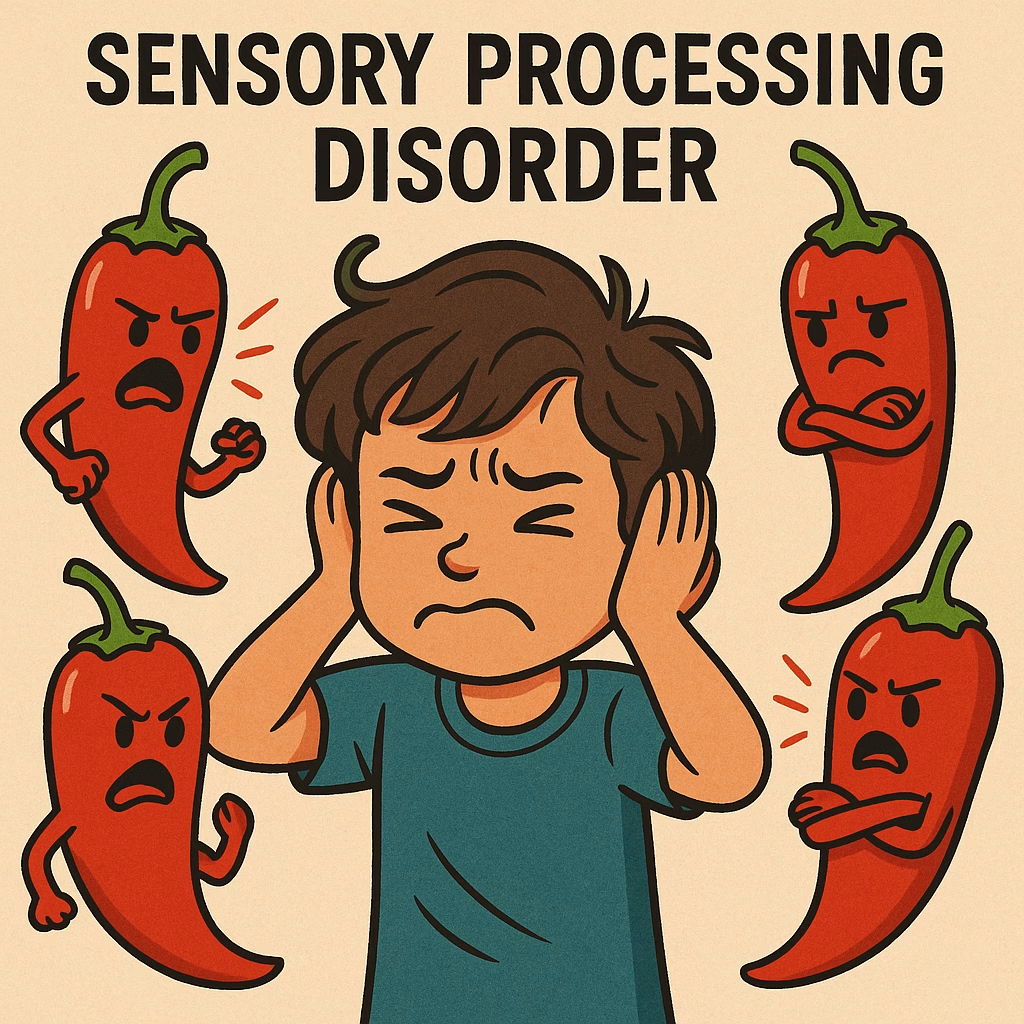
Understanding Sensory Processing Disorder (SPD)
For most people, daily sensory input (the hum of the fridge, the scratchiness of a jumper, the smell of someone’s perfume) fades into the background of our awareness. We can notice this but we can adapt and put it to the back of our minds and carry on with conversation for example. People with Sensory Processing Disorder (SPD), this everyday sensory input can feel extremely overwhelming or even painful.
SPD affects how the brain processes and responds to sensory stimuli, it’s a neurological condition, not just being sensitive. This can impact everything in a person’s life from movement to attention and emotional regulation. To build a truly inclusive and compassionate world, more knowledge and understanding of SPD is essential.
What Is SPD?
Sensory Processing Disorder is a condition where the brain has difficulty receiving, interpreting, and responding appropriately to sensory information. This includes input from the traditional senses (sight, sound, touch, taste, and smell ) as well as vestibular (balance and movement) and proprioceptive (body awareness). SPD isn’t currently listed as a standalone diagnosis in the Diagnostic and Statistical Manual of Mental Disorders (DSM-5), but it is recognized by many occupational therapists and healthcare providers, especially in the context of autism spectrum disorder and attention deficit disorders.
The three main types of SPD:
Over-Responsivity – This is when people are extremely sensitive to sensory input and may react strongly to things that others hardly notice.
Under-Responsivity– People may not respond to stimuli , as expected. For example, they may not notice their name being shouted or fail to react to pain.
Sensory Seeking – These people crave sensory input and may seem to be constantly touching objects, spinning, jumping, or make loud noises.
Signs and Symptoms
SPD affects people differently, which means signs can vary in adults and children.
In children, this can be seen as:
- Covering ears at common noises
- Tantrums or meltdowns in busy places
- Avoidance of certain clothing- due to tags or texture of materials
- Clumsiness or trouble with coordination
- Constant movement
- Unexpected “unaware” of pain, temperature, or body position
In adults, symptoms might look like:
- Discomfort in crowded places or bright lighting
- Sensitivity to specific sounds or smells
- Strong aversions to certain fabrics or foods
- Difficulty with balance or motor planning
- Feeling overwhelmed in environments others find manageable
It’s important to note that everyone experiences sensory sensitivities at times. What distinguishes SPD is the intensity, frequency, and interference with daily life.
Causes and Risk Factors
The exact cause of Sensory Processing Disorder isn’t fully understood, but research suggests a combination of genetic and environmental factors. SPD is more commonly observed in people with other neurodiversities, premature babies or birth complications. Although it is said that SPD can exist on its own.
Diagnosis and Treatment
Diagnosis of SPD typically involves a detailed evaluation by an occupational therapist (OT) with expertise in sensory integration. This may include a number of interviews, assessments and observation of behavior in various settings. Treatment for SPD usually involves OT using sensory integration therapy, the goal of this is to help individuals respond to sensory input in a more comfortable way.
Therapies may include:
Sensory diets– Activities that provide the right kind of sensory input.
Movement-based therapy – Activities like swinging, jumping, or climbing to stimulate vestibular and proprioceptive senses
Desensitization techniques – Gradually exposing individuals to sensory inputs they find distressing.
Environmental changes – Reducing sensory triggers at home or school
Adults– therapy may focus on strategies for coping, self-regulation, and changing environments to reduce sensory stress.
Helping Those With SPD
- Empathy – For people with SPD
- Predictable environments – Consistency and routine can reduce sensory overload.
- Boundaries– Respecting if someone can’t tolerate touch or noise.
- Visual schedules or timers– These can help with transitions, which are often difficult for people with SPD.
- Fidgets and other tools – Headphones, chewable jewelry, weighted blankets and sensory toys can help regulate input.
- Advocate – Ensure accommodations are made for others in different situations such as quiet rooms, flexible seating, or sensory breaks.
Final Thoughts
Sensory Processing Disorder is real, complex, and often misunderstood. While it can pose significant challenges, especially in environments not designed with sensory needs in mind, the right support can make a dramatic difference. Compassion, awareness, and appropriate interventions people with SPD can thrive. Understanding is the first step to inclusion.



0 Comments